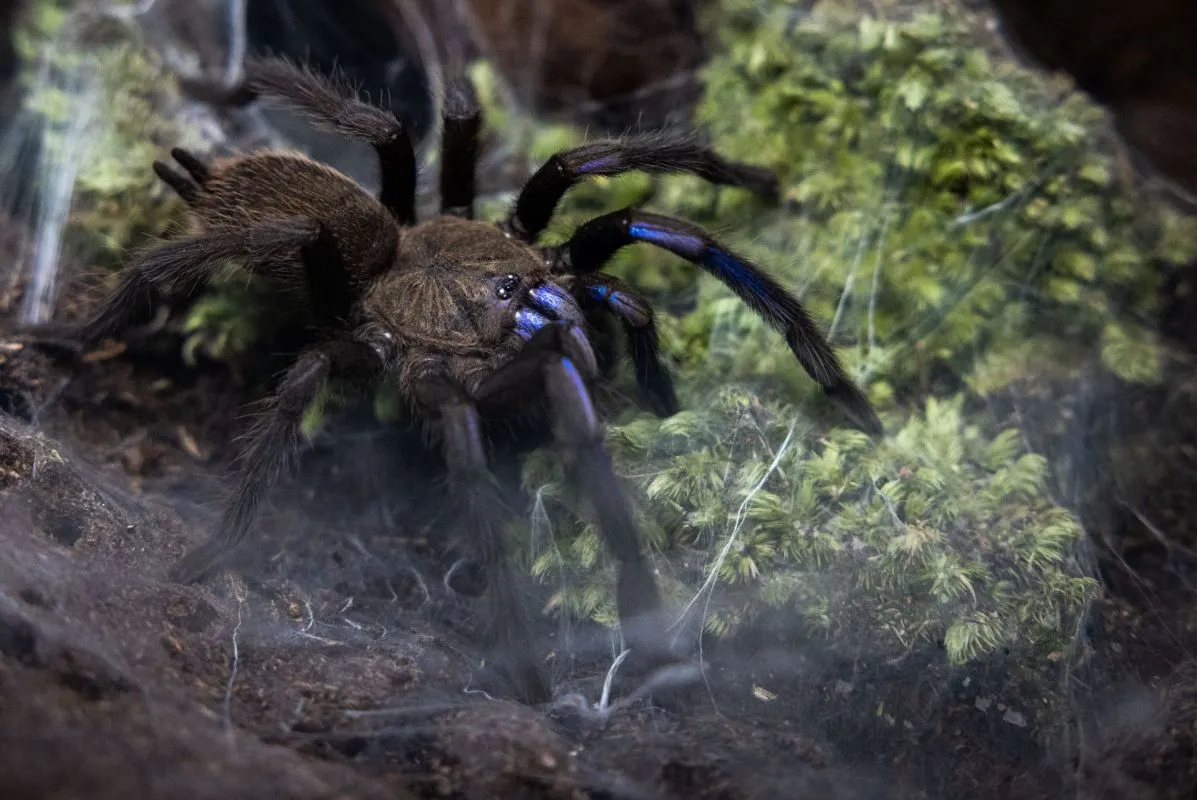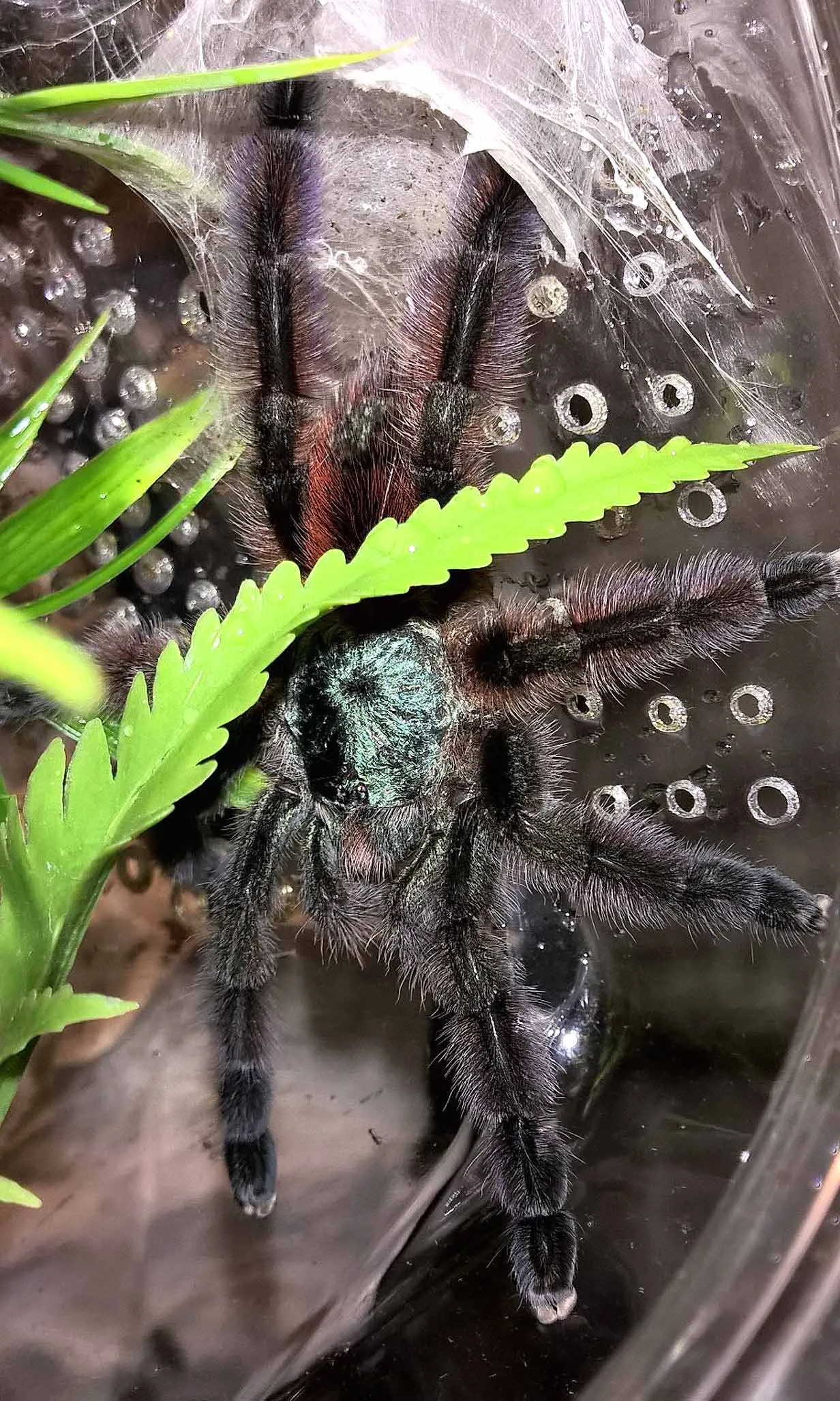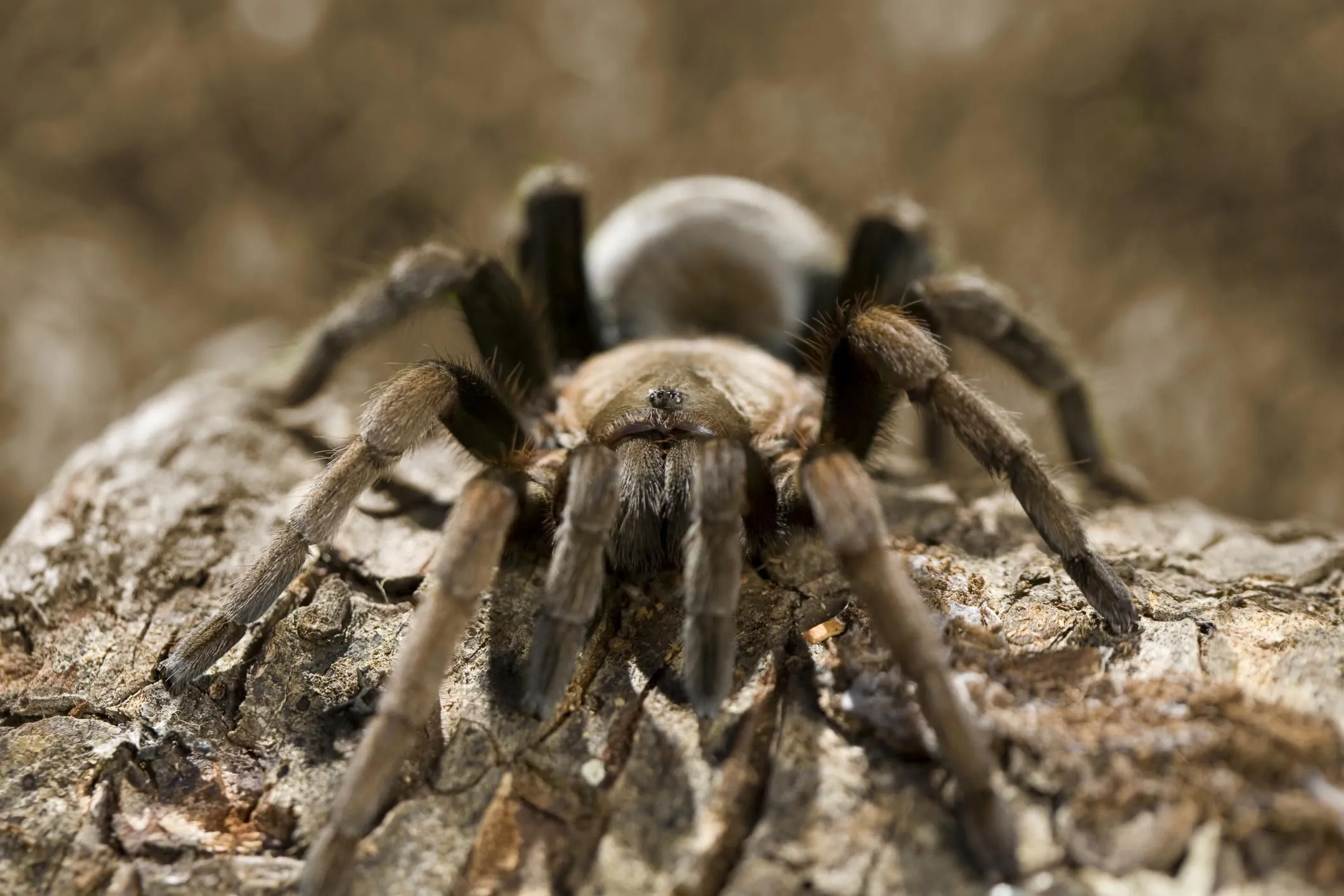5 Must-Know Tarantula Facts
Tarantulas, with their imposing size and hairy legs, often evoke a mixture of fascination and fear. These remarkable arachnids are a popular subject of curiosity, and many people consider them as pets. Understanding these creatures requires dispelling common myths and grasping the realities of their biology and behavior. In this article, we delve into five essential facts about tarantulas, offering insights into their nature, care, and the important things to keep in mind if you’re considering having one as a pet or simply wish to expand your knowledge of the natural world. From dispelling myths about their venom to understanding their unique defense mechanisms, this guide will help you appreciate these creatures.
What Makes a Tarantula Non-Toxic
Contrary to popular belief, tarantulas are not typically considered dangerous to humans due to their venom. The term “non-toxic” is more accurate than “non-venomous” because all tarantulas possess venom, but it is generally not potent enough to cause serious harm to humans. Their venom is primarily designed to subdue prey, such as insects and small animals. When a tarantula bites a human, the effects are usually comparable to a bee sting, causing localized pain, redness, and swelling. However, it’s essential to consider that individual reactions can vary, and some people may experience more severe allergic reactions. Therefore, while tarantulas are not inherently toxic, their bites should be treated with respect.
The Truth About Tarantula Venom

Tarantula venom is a complex cocktail of proteins and enzymes designed to immobilize or kill their prey. The composition of the venom varies slightly among different species of tarantulas. However, in general, it is not potent enough to pose a significant threat to humans. The primary effects of a tarantula bite are usually localized and include pain, itching, and swelling around the bite area. Systemic effects, such as nausea or fever, are rare, but can occur in sensitive individuals or those with allergies. It’s important to note that while tarantulas have fangs capable of piercing skin, the bite itself is not life-threatening, and serious complications are extremely unusual.
Comparing Tarantula Venom to Other Animals
When compared to the venom of other animals, such as snakes or scorpions, tarantula venom is relatively mild. The venom of these other animals often contains potent neurotoxins or hemotoxins, which can cause severe paralysis, tissue damage, or even death in humans. Tarantula venom, on the other hand, is primarily designed to affect insects and small animals. It typically causes paralysis and digestive issues in their prey, allowing the tarantula to consume them more easily. The difference in potency highlights the tarantula’s role as a predator of small invertebrates, rather than a threat to larger animals like humans. Therefore, the bite of a tarantula is significantly less dangerous than that of other venomous creatures.
Tarantula’s Defense Mechanisms
Tarantulas have several defense mechanisms, the most common being urticating hairs. These are tiny, barbed hairs located on their abdomen that the tarantula can flick towards a perceived threat. These hairs cause intense itching and irritation upon contact with skin, eyes, or mucous membranes. Another defense mechanism is their bite, although, as mentioned before, the venom is generally not very potent to humans. Some tarantula species also have the ability to stridulate, or make a hissing sound, by rubbing parts of their bodies together, which can startle potential predators. Their large size and imposing appearance are also effective deterrents against smaller predators.
Shedding and Regeneration

Tarantulas shed their exoskeleton as they grow, a process known as molting. This occurs several times during their lifespan, especially when they are young. During molting, the tarantula becomes vulnerable because its new exoskeleton is soft. They typically hide during this period. The process involves the tarantula absorbing nutrients and fluids to swell and split the old exoskeleton, allowing them to crawl out. The new exoskeleton takes several days to harden fully. Tarantulas can also regenerate lost limbs during molting, making it a crucial process for survival and growth. This ability highlights the adaptability of these arachnids and adds to their fascinating biology.
Different Tarantula Species
There are over 900 recognized species of tarantulas, found in various habitats across the globe. Their size, color, and behavior vary significantly depending on the species. Some are terrestrial, living in burrows in the ground, while others are arboreal, inhabiting trees. Their dietary preferences also differ, with some species specializing in certain types of prey. The wide variety of tarantula species demonstrates the biodiversity of the arachnid world. Each species has its own unique characteristics, making the study and observation of tarantulas a rewarding endeavor for enthusiasts and scientists alike.
Popular Tarantula Species
Among the many tarantula species, some are more popular as pets than others. The Chilean Rose Hair tarantula is known for its docile temperament and is often recommended for beginner tarantula keepers. The Pinktoe tarantula is prized for its vibrant coloration and arboreal lifestyle. The Gooty Sapphire Ornamental tarantula, though more challenging to care for, is sought after for its striking blue and gold markings. These popular species, alongside others like the Mexican Red Knee and the Brazilian Black, are commonly available in the pet trade. Researching the specific needs of any tarantula before acquiring one is crucial to ensure its well-being.
Lifespan of Tarantulas

Tarantulas have relatively long lifespans compared to many other invertebrates. The lifespan varies depending on the species and sex. Female tarantulas typically live much longer than males. Some female species can live for over 20 years, while males often die shortly after reaching maturity, which can be as early as 2 to 3 years. The long lifespan of female tarantulas is a testament to their robust nature and their ability to adapt to various environmental conditions. Proper care and diet also play a significant role in extending a tarantula’s lifespan, contributing to the overall health and longevity of these fascinating creatures.
How Long Do They Live
The longevity of tarantulas varies widely by species, but the average lifespan of a female tarantula is between 10 to 30 years. Males, on the other hand, have significantly shorter lifespans, typically living for only a few years after reaching maturity. Several factors influence a tarantula’s lifespan, including the species’ genetics, diet, and environmental conditions. Captive tarantulas, especially those provided with excellent care, often live longer than their counterparts in the wild, where they face predators and harsh environmental conditions. The extended lifespan of females highlights their ability to adapt and thrive, making them a captivating subject of study.
Habitat and Behavior
Tarantulas live in a variety of habitats. Some are terrestrial, preferring to burrow in the ground or live in pre-existing burrows. Others are arboreal, inhabiting trees and shrubs. Their behavior is also diverse, with some species being more docile and others more defensive. They are primarily nocturnal hunters, using their fangs to inject venom and subdue their prey. Tarantulas also have specific behaviors related to mating, molting, and defense. Understanding the habitat and behavior of a tarantula is essential for both their care in captivity and their conservation in the wild.
Where Do Tarantulas Live

Tarantulas are found in a wide range of habitats across the world, primarily in tropical and subtropical regions. Their geographical distribution includes North and South America, Africa, Asia, and Australia. Terrestrial tarantulas often live in grasslands, deserts, or forests, where they can burrow into the ground or find shelter in pre-existing holes. Arboreal tarantulas are typically found in trees, shrubs, or other elevated locations. The specific habitat of a tarantula species is determined by its adaptations to its environment, including temperature, humidity, and the availability of prey. This versatility is why tarantulas thrive in so many different environments.
Tarantula Care Tips
Caring for a tarantula involves creating a suitable environment that mimics their natural habitat. This includes providing appropriate housing, temperature, humidity, and food. It’s important to research the specific needs of the tarantula species you have or are considering. Regular maintenance, such as removing old food and waste, is crucial to maintaining a healthy environment. Handling a tarantula should be done with caution, as they can be easily stressed, and their defense mechanisms can be triggered. Providing the right care can ensure a long and healthy life for your pet tarantula.
Creating a Safe Habitat
The enclosure should be appropriately sized, with enough space for the tarantula to move around. For terrestrial species, the enclosure should be wider than tall, while arboreal species need taller enclosures with climbing structures. The substrate, or bedding, should be appropriate for the species, typically consisting of a mix of peat moss, coconut fiber, and vermiculite, which helps in maintaining humidity. The enclosure should also include a water dish and a hide, such as a piece of cork bark or a plastic cave, to provide a secure space where the tarantula can retreat. Ventilation is also important to prevent mold growth and maintain air quality.
The Importance of Humidity

Maintaining the correct humidity levels is vital for a tarantula’s health, especially during molting. The humidity level varies depending on the species; some need higher humidity than others. Regular misting of the enclosure with water can help maintain the proper humidity, and a hygrometer can be used to monitor the humidity levels. Poor humidity levels can lead to problems with molting, dehydration, and overall health issues. The substrate also plays a role in maintaining humidity. Choosing the right substrate and misting schedule helps ensure the tarantula receives the moisture it needs to thrive.
What to Feed Your Tarantula
Tarantulas are carnivores, primarily feeding on insects. Crickets, mealworms, and roaches are common food sources in captivity. The size of the prey should be appropriate for the size of the tarantula; the general rule is to offer prey that is no larger than the tarantula’s body size. It’s also essential to provide a varied diet, with different types of insects to ensure that the tarantula receives a range of nutrients. Food should be offered regularly, typically once or twice a week, but it depends on the tarantula’s size and feeding habits. Any uneaten food should be removed within 24 hours to prevent mold growth and maintain hygiene.
Handling Tarantulas Safely
While tarantulas are generally not aggressive, handling them should be approached with caution. It’s best to avoid handling them unnecessarily, as it can stress them. If you do need to handle your tarantula, do it in a safe environment, such as close to the ground or over a soft surface, to prevent injuries in case of a fall. Always be gentle, and never squeeze or grab the tarantula. Be aware of their urticating hairs, which can be irritating. Wash your hands thoroughly after handling the tarantula or any items in its enclosure.
Signs of a Healthy Tarantula

A healthy tarantula exhibits several signs. They should be active and alert, and they should eat regularly. The abdomen should be full and rounded, without appearing shrunken or wrinkled. The exoskeleton should be shiny and free from any visible damage or parasites. Healthy tarantulas also molt regularly, shedding their old exoskeleton to allow for growth. Observing these indicators of a healthy tarantula enables you to proactively address any potential health concerns and ensures that your pet thrives. Regular monitoring and awareness of the tarantula’s behavior and appearance are essential components of responsible pet ownership.
Common Health Issues
Tarantulas, like all animals, can be susceptible to certain health issues. Dehydration is a common problem caused by insufficient access to water or incorrect humidity levels. Parasites, such as mites, can infest tarantulas, causing irritation and stress. Injuries can occur from falls or from being bitten by prey. Respiratory problems can arise from improper environmental conditions, such as mold growth. Regular observation, providing the correct care, and seeking veterinary advice when necessary are essential for preventing and treating these common health issues. Prompt intervention and preventive measures contribute significantly to the longevity and well-being of these fascinating creatures.
Preventing Illness
Preventing illness involves proactive measures, including maintaining optimal environmental conditions and offering a nutritious diet. A clean enclosure is also crucial, with regular removal of uneaten food and waste. Quarantine new tarantulas before introducing them to existing ones, to prevent the spread of any potential diseases or parasites. Monitoring the tarantula’s behavior and appearance and recognizing early signs of illness, like lethargy or loss of appetite, is crucial. Consulting a veterinarian experienced with arachnids can also help provide expert guidance and support. These combined strategies ensure that your tarantula stays healthy, thrives, and remains an engaging pet.
